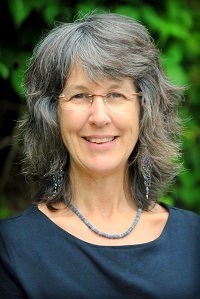

Yoga means union—the union of body, mind, and spirit. It comes from a root word that means literally "to yoke together" or "to attach," which dates back over 2,000 years.
Although it first began in India, with original words in Sanskrit, yoga is now common all over the world, including Europe and the United States, where its popularity has been increasing dramatically since the early 1900s. It is currently found in fitness centers or gyms, medical centers, meditation centers, dance studios, churches, wellness programs, and yoga studios such as Neighborhood Yoga in Boone. Yoga practice may be combined with religious practices, such as specific kinds of prayer or meditation, but these days in the United States it is most often practiced in a secular way, sometimes with a more generic meditative or spiritual aspect that is not attached to any particular religion.
A regular yoga practice includes three components:
- physical postures/positions or movements
- breath awareness and intentional breathing techniques
- This is usually part of the physical postures or movements, and can also be helpful to carry into other times of the day or week.
- mindfulness practice
- This can be a time to just sit quietly in a way that is peaceful, a specific structure or style of meditation or prayer, or it can be moments of intentional focus or directed consciousness while doing other activities.
People learn and practice yoga in groups or classes and/or individually for many reasons, including:
- improve muscle tone, strength, balance, and flexibility
- prevent and manage stress and anxiety
- improve overall health
- increase immune function
- assist with healing specific health problems
- gain a sense of calm, tranquility, or centering
- re-energize when tired
- manage emotions and moods
- assist with emotional/psychological healing
- enhance everyday awareness or mindfulness
There is a growing quantity of western-style research in the U.S. that supports many medical and psychological benefits of a regular yoga practice. Look for more about this here in the future.
Recent research has shown Yoga may have a greater positive effect on a person’s mood and anxiety level than other forms of exercise. Yoga’s ability to improve mood is, at least in part, linked to increased levels of neurotransmitters dopamine and serotonin and of GABA, a chemical in the brain that helps to regulate nerve activity.
Yoga strengthens the vagus nerve, which helps calm the body's stress reactions when they are not needed, and which helps support the systems involved with GABA. It reduces cortisol levels when they are too high and directly helps moderate the activity of the HPA axis (hypothalmus-pituitary-adrenal axis, part of stress reactivity that can become damaging when sustained).
Yoga has also been shown to reduce depressive symptoms, eating disorder symptoms, PTSD symptoms, chronic pain and insomnia. Some of the above effects begin to occur after even just one session of yoga practice.
Certified Yoga Teachers — if you are interested in teaching a small class or offering individual yoga instruction at our Center, please contact us at the Blue Mountain Center office, 828-265-1455.
Deborah Tallarico, RN, LPC
Individual yoga instructor
I have been practicing yoga since 1993 and completed a year-long Yoga Alliance approved teacher's training program in 2005. In 2008, as part of my Master's Degree in Counseling, I completed a concentrated study in body-centered therapy. I am currently pursuing further training integrating yoga practice specifically for mental health issues.
As requested and as is beneficial to my clients, I incorporate yoga and movement into individual counseling, psychotherapy, and expressive arts therapy sessions. I believe that healing and wellness are cultivated through the experience of a consistent mind-body practice.
I also offer individual and small group sessions for beginning yoga students. Yoga/movement sessions may include asanas (poses), pranayama (breathing), meditation, visualization, relaxation, inner listening, and gentle body-guided movement.
Suzi Woodard, LPC
Individual yoga instructor

Since the late 1970s, I have been involved in mind-body healing and wellness practices, therapeutic breathwork, expressive arts therapies, and body-centered psychotherapies that were then considered radically alternative. I began taking yoga classes in the mid-1980s in a variety of styles.
My most recent training has been in a modality called Subtle Yoga for Behavioral Health, taught by Kristine Kaoveri Weber, MA, eTYT500, and Ashley Lester, LCSW, LISW, RYT200. This is a research-based style that is designed for enhancing overall well-being, for use as part of psychotherapy, or in combination with psychotherapy. I enjoy its user-friendly design with a range of levels depending upon a client's physical ability and setting. Much of it can be done sitting in a chair or standing. Subtle Yoga combines aspects of traditional yoga practices with research findings from respected cutting-edge neuroscientists and mental health researchers about what works to improve specific conditions such as anxiety, depression, post-traumatic stress, and even addictions.
I am happy to share these practical, valuable Subtle Yoga influenced practices with individual counseling or coaching clients or as part of educational workshops. I completed my Subtle Yoga teacher training in 2015 and am certified with Yoga Alliance (RYT200).

